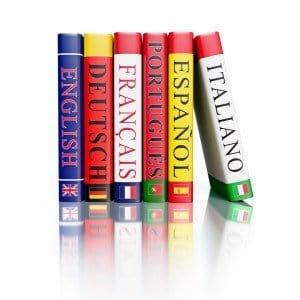Having grown up in Montreal, a bilingual city, has been a wonderful boon to me. But the daily exposure I have had to both French and English has some benefits that many local friends take for granted.
Starting first grade, my Dad had decided to send me to French school, for my own good, but mostly because he wanted me to be well prepared to take the reins of the business that he was building.
In my 20’s, I took a vacation to Mexico and felt really ignorant because I did not understand the language, so when I got back, I headed to the YMCA for Spanish courses.
Facility with language learning is not something everyone has to the same degree, but having exposure early in life certainly helps one have the confidence needed to learn a new language when needed.
So what does this have to do with family legacy, you ask? Let the analogies begin.
Dealing with your family legacy requires getting used to some new language, or at least some new vocabulary and new ways of expressing yourself, to develop common understanding.
Just like learning a new language, you don’t just decide to learn Spanish one day and become fluent the next.
These days there are new methods like Rosetta Stone that take advantage of technology and a better understanding of how people learn languages best, but let’s just break it down into some simple levels.
For many, reading a new language is the easiest way to begin to understand, because you can take your time and look at each word. Hearing people speak the words and understanding them in real time is more difficult.
To speak and be understood is again another level, and writing something coherent in an unfamiliar language is not advisable until you are much further along.
My point is that there is a progression through different levels, a need to move up gradually to develop a vocabulary, a comfort level, and the confidence to speak and use the new language.
In a family trying to preserve its legacy, to transition from one generation to the next, many important questions arise, like:
- Who does the work
- Who undertakes the leadership
- Who keeps things on track
When families fall apart, it is almost always because somehow things fell through the cracks or people did not get along and agree. Often, nobody really ever understood and bought into the plans in the first place.
For the members of the rising generation to buy in, there are some things that are almost indispensable to have in place, to one degree or another.
The siblings (or cousins) need to share at least some level of financial fluency. Like a language, nobody just decides to learn it and gets there really quickly. But if a group of people is expected to work together on a big project, it helps if they all have a basic level of understanding of the subject being discussed.
But if basic financial fluency was all that was required, that could be remedied easily enough, assuming a willingness to learn.
The harder part is learning how to work together. The family interaction part is where so many plans go off track. Once again, a phased leaning process can help.
Let’s look at what makes people progress faster when learning a new language:
- A teacher who knows the language AND how to teach it
- Lots of opportunities to practice
- The ability to give and accept feedback
- A helpful, “can do” attitude of those learning together
- A safe environment so nobody is afraid to make a mistake
Preserving a family legacy for future generations is no easy task, but if the people you are counting on to make sure it happens all speak the same language, it sure helps. If they helped each other learn it together, even better.
People can learn to work together, but first they must all be aware of just why it is so important for them to do so. Some basic family harmony is required, and unfortunately, it doesn’t usually happen all by itself.
Comprenez-vous?




